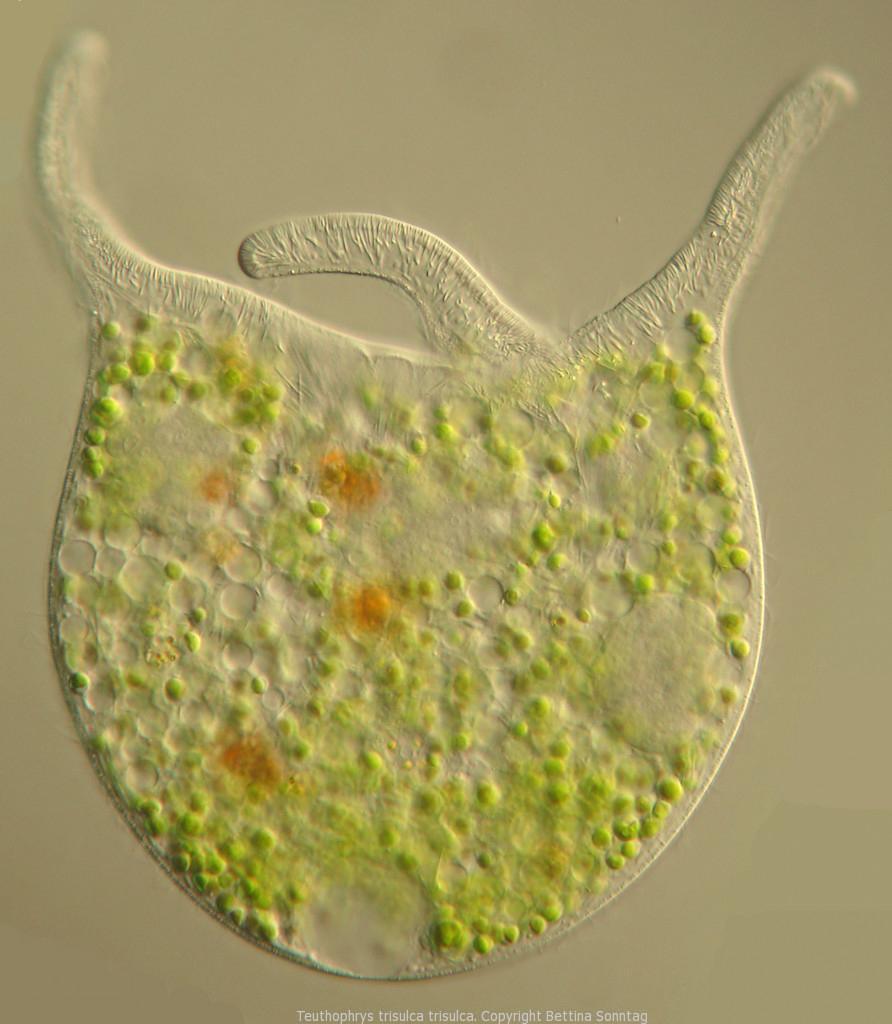Ciliates live in rivers and lakes and look like little monsters. They are very important for the nutrient cycles and are even visible with a good magnifying glass.
Ciliates
– small and monstrous
Picture: Teuthophrys trisulca trisulca lives in symbiosis with algae symbionts. This up to 0.3 mm sized ciliate catches small multicellular organisms (e.g. rotifers) with its three arms, swallows them up and digests them. Teuthophrys trisulca trisulca can be found in the plankton of lakes.

Audience microscope
World of Ciliates
Project description
Ciliates populate alpine rivers, lakes and other habitats and can be cultivated in the lab. They are very good and spectacularly visible in the microscope. Ciliate cultures in culture bottles (50 or 200 ml) are visualised with a stereo magnifier, and fixed preparations are further explained in the light microscope. Researching life in water droplets – planktonic ciliates as model organisms in the microbial food web of lakes and/or symbiosis between ciliates and green algae are presented (keyword: model ciliate Paramecium bursaria).
Idea/Organization
Institute of Limnology Mondsee (Sonntag, Nachbaur, Pröschold)

